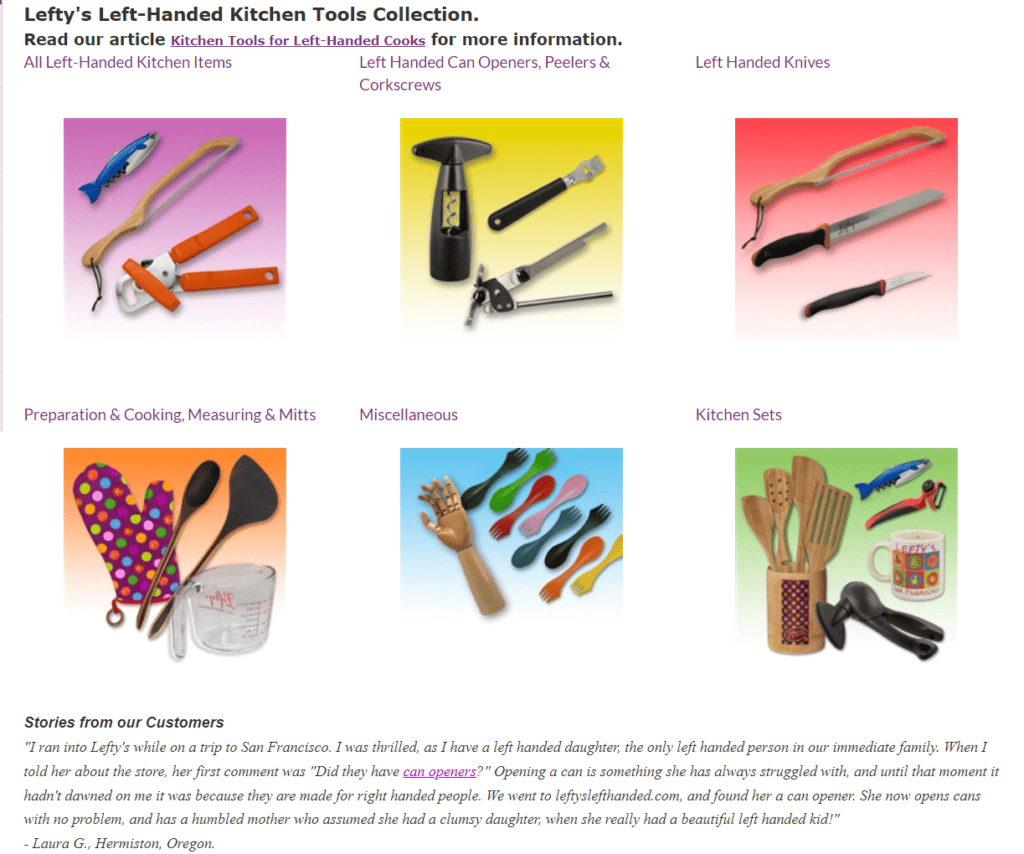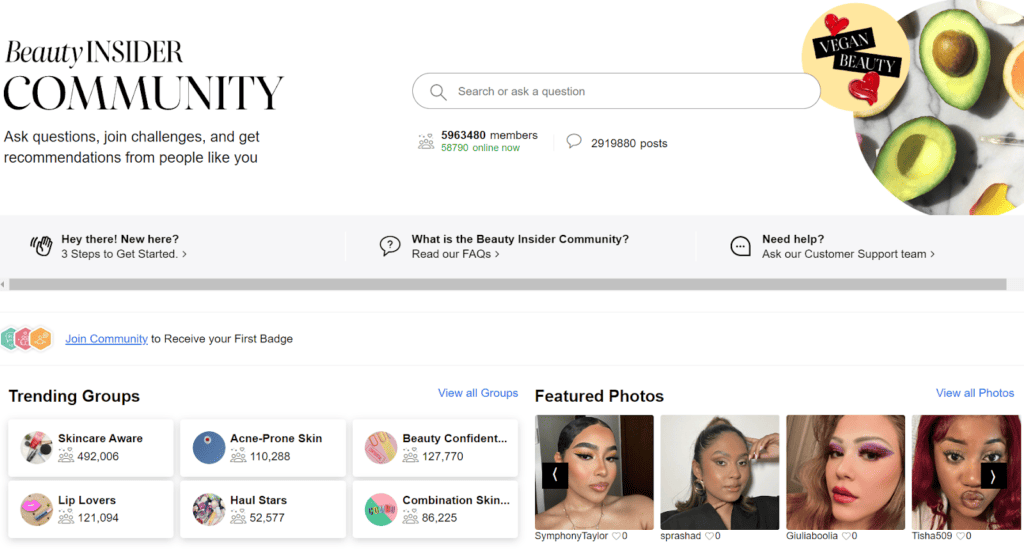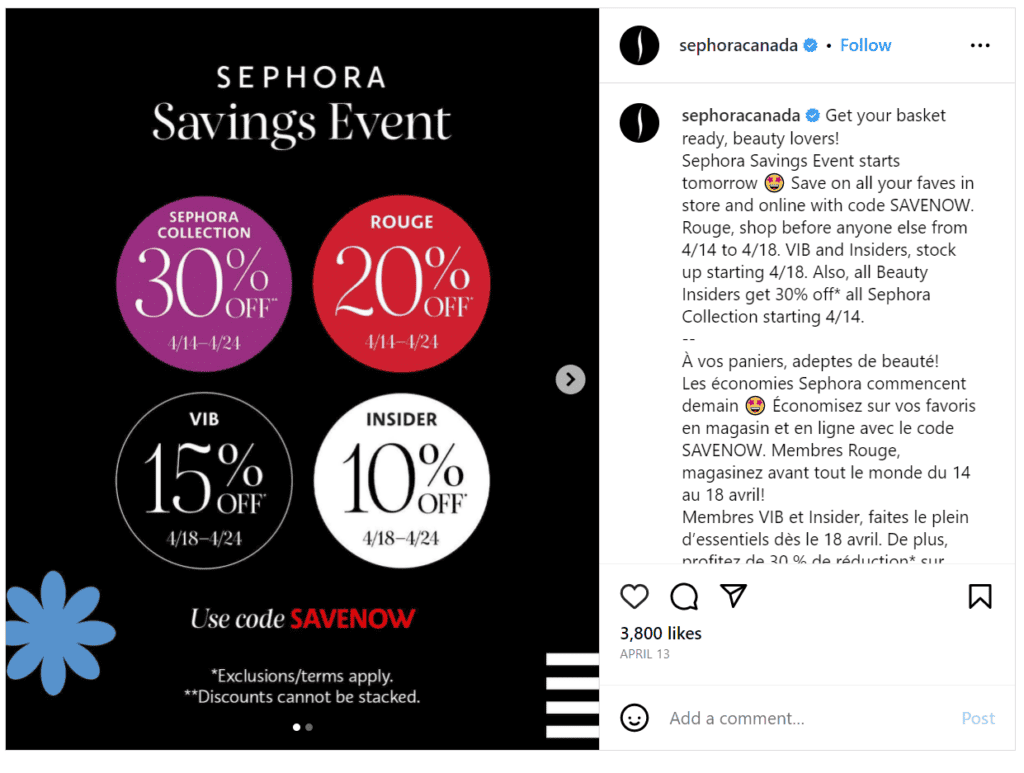Your Complete Guide to Micromarketing
To stay relevant in today’s hypercompetitive market, businesses seek ingenious ways to improve customer acquisition and retention.
One of these ways is by going small.
Micromarketing is a type of marketing strategy that caters to the needs of a niche market segment within your broader target audience. In this guide, you’ll learn micromarketing and running a successful campaign.
Table of Contents
What is a micromarketing campaign?
A micromarketing campaign targets a niche segment within your target audience. These customers may share traits like age, location, occupation, and gender.
Say you sell online courses on digital marketing and notice you mostly attract SaaS companies’ marketers. You could create a micromarketing campaign that appeals to this segment to attract customers.
There are two advantages of micromarketing. One, the budget for marketing a niche product to smaller customer segments is less than marketing to the entire customer base. Two, targeted campaigns have a better chance of reaching leads and pushing them further down the sales funnel.
Coca-Cola’s ‘Share A Coke’ campaign exemplifies successful micromarketing. The company identified popular names in a specific region and replaced its trademark label with those names. Each bottle targeted a particular demographic, e.g., people named James who drank Diet Coke.

Coca-Cola launched the initial campaign in Australia. It was hugely successful and replicated around the world using popular localised names.
The Four Levels of Micromarketing
Micromarketing operates on four levels, each representing a different targeted approach to identify and serve customers' unique demands. In this section, we will explore each class and how you, as a creative, can use each one to boost your brand's growth.
Local Marketing
Local marketing is considered the most foundational level of micromarketing. It involves reaching customers within a specific geographic area, such as a neighbourhood, town, or city.
You can easily create highly relevant and personalised marketing campaigns by understanding your target locale's preferences, behaviours, and customer characteristics. This enables you to establish a strong presence in your local market, which leads to more substantial and long-term customer relationships that give you a competitive advantage.
There are various ways to create thriving local micromarketing campaigns. You can actively participate in community events, partner with or sponsor local organisations, and collaborate with local influencers. Additionally, use locally used languages, reference local culture, and address specific concerns or interests currently prevalent in the community.
This Nike “Nothing Beats a Londoner” commercial is an excellent example of successful localised marketing. It targeted young people in London who practise different sports in various environments.

The campaign was a great representation of London’s entertainment and sports culture. It also featured other classic London locations and the English humour that allowed every Londoner to relate to the campaign, leading to its success.
Individual Marketing
Individual marketing takes personalisation to the next level by focusing on one-to-one customer interactions. This level recognises that every customer is unique and aims to create a customised experience for each individual. It caters to their characteristics, special preferences, needs, and interests.
To implement individual micromarketing successfully, you must segment customers based on their characteristics, which data-driven insights should inform. Key features include customer demographics, behaviour, preferences, and purchase history.
The critical individual marketing strategies include personalised communication, using customers’ names and recommending products based on past interactions. You can also send customised offers and recommendations based on preferences.
A great example of such individual marketing is Spotify’s End-Of-Year Wrapped Report, which most users now look forward to annually. It has helped forge a more personal connection between the users and Spotify.

The platform sends users the year's top tunes and describes their music personality based on their listening patterns, as shown above.
Besides the report, Spotify also offers various recommendations within the year based on listening histories. Users also get personalised playlists like “Your Time Capsule,” which takes you back to songs you loved at a certain point.

Finally, with individual marketing, you must embrace marketing automation. Automated tools make it easier for businesses to scale their marketing efforts by making it easy to deliver personalised content to multiple customers.
Niche Marketing
Niche marketing targets a specific segment or niche within a broader market. By identifying and catering to the distinct needs and characteristics of a specialised group of customers, you can position yourself as an expert in the niche. This positioning establishes credibility and trust, making attracting and retaining customers within the niche easier.
Lefty's San Francisco: The Left Hand Store is an excellent example of a company centred around niche marketing. The store specialises in day-to-day tools for the under-served left-handed community. This gives their store a competitive edge.
Here’s an example of their kitchen tools collection.

This level of micromarketing often requires in-depth knowledge of the target audience, industry trends, and tailored messaging that resonates with the niche segment.
As such, you should embrace a customised marketing mix, including unique product offerings, specialised promotional campaigns, and targeted distribution channels.
Micro-Segment Marketing
Micro-segment marketing takes the niche marketing concept to a more granular level by dividing the market into smaller, highly targeted segments.
This level involves analysing customer data to identify precise micro-segments based on extra-specific factors like individual hobbies, interests, or consumption patterns. Then with these details, you deliver hyper-personalised experiences to personal customers within each micro-segment.
Micro-segment marketing requires agile strategies that allow you to adapt your marketing approaches to evolving needs and preferences of your microsegments. These tend to change more constantly for smaller segments than large ones due to the specificity. Hence, agile marketing strategies will help keep your marketing efforts adequate and relevant.
Micro-segment marketing can also help you establish yourself as a leader in your niche markets. This leadership position enables businesses to influence trends, set industry standards, and enjoy a competitive advantage.
How Does Micromarketing Work?
Up to this point, it's clear that micromarketing operates on the principles of personalisation and tailored messaging. But how exactly does micromarketing work? Like with any other process, you need a great strategy. So here’s a great breakdown.
- Identifying target audience: As discussed, there are various levels of micromarketing, so the first step should be placing your target audience. Are you going for a local market, a specific gender, people working in certain industries, or a niche market? This makes it easy to identify your target customer’s needs, which you'll use to create a customer persona.
- Data Collection: Micromarketing heavily relies on data collection and analysis, which makes this a critical step. It entails collecting relevant data on your target customers, like demographics or psychographics, which will help with comprehensive market evaluation. You can collect this information through customer surveys, online analytics, customer feedback, and market research.
- Segmentation: Once the data is collected, it is analysed to identify meaningful segments within the target audience. These segments can be based on geographic location, demographics, interests, behaviours, or other relevant criteria. Remember, this should be based on the micromarketing strategy you choose.
- Targeted Messaging: With the segmented data, you, as a creative, can develop personalised marketing messages that resonate with each target segment. By addressing your audience’s unique needs and concerns, you can create content that will capture their attention and drive engagement.
- Channel Selection: Next step is choosing the most effective channels to reach each target segment. This could include social media platforms, email marketing, direct mail, online advertising, or other channels that align with your chosen segments’ preferences.
It's critical to note that the constant success of your micromarketing campaigns relies on continuous measurement and optimisation of campaigns. So track your key performance indicators (KPIs), collect customer feedback, and analyse the results.
Doing this will help you refine your strategies, identify areas for improvement, and ensure that your micromarketing efforts are successful.
Micromarketing Versus Macromarketing: How They Differ
Micromarketing and macromarketing are two distinct approaches. They differ in their scope, targeting strategies, and marketing objectives.
Micromarketing targets specific segments or niches within a market. This means the target audience tends to be small and well-defined groups. Macromarketing, on the other hand, takes a broader approach, targeting an entire market or large segments of it without precise differentiation.
For example, while micromarketing might focus on female fitness enthusiasts in London, macromarketing may focus on global fitness enthusiasts.
Additionally, communication channels used in micromarketing are targeted and more niche-specific. As a result, micromarketing messages tend to be more personalised to appeal to each individual or segment. Macromarketing, however, leans towards mass marketing. This means the strategy uses more mainstream channels to reach a larger audience. The goal is to make the marketing messages widely accessible.
The marketing objectives of the two are also different. The main goal of micromarketing is to build stronger customer relationships and gain customer loyalty. Macromarketing’s key objective, on the other hand, is boosting market penetration, profits, and brand awareness.
Exploring the Different Types of Micromarketing Techniques
Micromarketing offers a range of techniques that you can employ to reach and engage your target audience. Let's explore some of the different types of micromarketing techniques:
- Geographic Micromarketing
The geographic micromarketing technique focuses on targeting customers based on their location. It involves tailoring advertising efforts to specific geographic areas, such as neighbourhoods, towns, cities, or regions.
For creatives, this could mean running location-specific ad campaigns. You can also geotag your social media posts, participate in local events, or leverage regional partnerships to establish a strong relationship with locals.
- Demographic Micromarketing
Demographic micromarketing involves segmenting the audience based on demographic characteristics such as age, gender, income, education, career, etc.
You can create targeted marketing messages and campaigns that resonate with specific demographic groups. For instance, if you’re selling an online course, you can include designs, visuals, and content that appeal to a particular age group or highlight topics that cater to a specific profession.
- Behavioural Micromarketing
Behavioural micromarketing focuses on understanding and targeting customers based on their past behaviours and actions. You can easily personalise your marketing efforts by analysing data such as previous purchases, browsing habits, or past interactions with the brand.
Use personalised recommendations, behavioural retargeting, or exclusive discounts based on specific customer actions or interactions.
- Psychographic Micromarketing
Psychographic micromarketing involves segmenting the audience based on psychological and lifestyle factors such as interests, values, attitudes, and personality traits. By understanding your target audience’s motivations and preferences, you can tailor your marketing efforts to align with your customers' psychographic profiles.
This can be hard to demonstrate, but one of the ways to do it is by aligning your marketing messages to your target audience’s psychographic traits. For instance, you can have a marketing message that shows that your products or services appeal to specific beliefs or values. Say, cruelty-free or halal labels.
- Occasion-Based Micromarketing
Occasion-based micromarketing focuses on targeting customers during specific events or occasions. It involves creating marketing campaigns that align with holidays, seasons, or special events relevant to the target audience.
To launch successful occasion-based micromarketing campaigns, you can develop themed promotions. You can also offer limited-time offers or seasonal creative designs that resonate with customers during these occasions.
- Relationship-Based Micromarketing
Relationship-based micromarketing centres around building and nurturing relationships with current customers. Therefore, it involves personalised communication, constant engagement, and tailored experiences based on the customer's preferences and needs.
To implement relationship-based micromarketing successfully, use tactics like personalised emails, offers, follow-ups, and loyalty programs. You can also launch a robust online community platform and offer members benefits like exclusive access to new designs or services.
These tactics will help you connect with your target audience deeper, strengthening your customer relationship. This then affects your business outcomes.
Sephora, for instance, runs successful relationship-based micromarketing campaigns thanks to their well-established online community–The Beauty Insider program.

Sephora customers can ask questions through this community and get other customers’ opinions. This allows Sephora to connect with customers more personally and helps boost customer loyalty.

Additionally, based on their tiers, as shown above, members get exclusive discounts. They also enjoy other customer rewards like first access to products, same-day unlimited delivery, exclusive events, and app exclusives.
Launching your micromarketing campaign
The size of the target audience makes micromarketing campaigns easy to manage. So, any business can use micromarketing. Tools like email lookup and social media analytics work wonderfully to develop fine-tuned, highly personalised content reaching the right audience.
When done correctly, micromarketing can generate higher conversions and ROI than undifferentiated marketing campaigns.
So, here’s what you should do to run an effective micromarketing campaign.
1. Create buyer personas
All marketing campaigns should start with a buyer persona, especially micromarketing. Since you are targeting a specific group of potential customers, you need to know them personally.
A buyer persona is a data-based characterisation of your ideal customer. It helps define your customer’s needs, pain points, and purchasing behaviours. Check out this example:

When building your customer personas, collect both quantitative and qualitative data. Quantitative data shows how many niche customers you have or their average spending. Qualitative data tells you what kind of customers they are – their demographics, job titles, interests, etc.
You can collect the data for your customer personas from different sources. Customer relationship management tools provide information on how customers interact with your business. For detailed and personalised information, surveys and interviews provide insight into customers’ behaviours.
2. Set campaign goals
The objective for most micromarketing campaigns is revenue generation. Secondary objectives include brand awareness, new product launches, and customer retention, to name a few.
Whatever your micromarketing goals, they need to be SMART, i.e., specific, measurable, attainable, relevant, and time-based. Using the online courses scenario from earlier as an example, the goal statement might look like this: Increase monthly course sales by 50% within the next six months by implementing targeted marketing strategies, such as email campaigns and social ads.
This goal is specific, measurable, attainable, and time-based because it cannot be subject to interpretation, can be measured, and can be met within a particular time frame.
Having SMART goals holds you accountable by eliminating guesswork and tracking progress and milestones.
3. Decide how you want to reach the audience
Once you’ve determined your campaign goals, it’s time to decide how you want to reach your audience. If your campaign aims to sell vegan leather loafers through email marketing, you should naturally use email to contact your customer. You can use guest posts to reach your potential customers to increase brand awareness online. You’ll just have to use outreach tools to look for those websites that can publish your posts.
Generally, your buyer persona tells you who you should market to and their preferred communication channels.
For example, email marketing for twenty-something college students may be less effective than social media marketing. It’s not that college students don’t use email. Instead, this demographic spends much time on social media, so you are more likely to get higher conversion rates through social media than email.
The appropriate channels will ultimately depend on your customers' preferences rather than general market data or assumptions. You can also reach your audience through content promotions, influencer marketing, guest posting, phone calls, and text messages.
Once you’ve identified the right platforms for your target customer, start working on the right marketing messages for different stages of your sales process. That is where the qualitative data you collected for customer personas is valuable. The language customers use when interacting with your business (social media comments, reviews, complaints) can be used to create powerful messaging that resonates and converts.
4. Launch your campaign
Knowing whether your marketing efforts will succeed before launching your campaign is tricky. But there are ways to mitigate the risks. One way is A/B or split testing.
A/B testing is a user experience experiment. Customers are randomly presented with two versions of your marketing campaign. Different elements are tested, one at a time, to determine which variant boosts conversion rates.
For example, if you’re testing the effectiveness of an email CTA, the CTA text is tested separately from the CTA colour button.

In their A/B testing, Campaign Monitor found that the CTA copy “Get the formulas” had 10% higher email click-through rates than the generic “Read more” document in their A/B testing.
Some elements you should test include messaging, typeface, use of colour, and page layout. You can leverage this information for current and subsequent campaigns when you find the combination that resonates with your niche audience.
5. Track the progress
Even with a unique selling point, stellar buyer persona, and air-tight A/B tested formula; you still need to know if the campaign generates the desired response. This applies to implementing an eCommerce, B2B, or SaaS marketing strategy.
If the success of your campaign based on your goals is measured by the number of sales, you should have sales-related KPIs. Sales-related KPIs include revenue, conversion rate, return on ad spend, return on investment, and others.
The effectiveness of your marketing channel also needs to be measured and tracked. For example, email open rates show you how successful your email marketing campaign is.
Wrapping Up
Micromarketing is marketing products and services to a highly specified segment of consumers within your customer base. Business owners use micromarketing because it is a cost-effective way to market to niche audiences.
The success of any micromarketing campaign begins with a highly defined audience. In addition, setting campaign goals, deciding campaign variables, and tracking progress ensure the effectiveness of your campaign.
If you follow the steps outlined in this article, you can rest assured your micromarketing campaign will yield the results you’re looking for.
